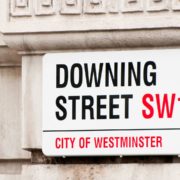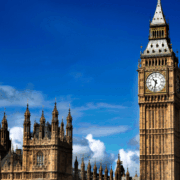8 things we want to see
Urgent clarity on the tax-free lump sums people can take from pensions
A pensions review that builds a new consensus for pensions for the
automatic enrolment generation
LISA reform to support first-time buyers and the self-employed
Maintenance of ISA allowances
Progress on the advice/guidance boundary review
More useful risk warnings and disclosures
Allowing LTAF investment through a stocks and shares ISA
Retail investment support for the National Wealth Fund
3 things we don’t want to see
The UK ISA – reports that this idea has been scrapped are welcome
Knee jerk changes to pensions tax reliefs
A change to CGT without ensuring it supports long term investment
Sarah Coles, head of personal finance, Hargreaves Lansdown:
“The government faces a massive fiscal challenge, caught between the
rock of the promise not to raise taxes on working people, and the hard
place of a multi-billion pound black hole in the public finances. It
raises the likelihood of squeezes elsewhere, but the government cannot
apply pressure without considering the impact on savers and investors,
and their ability to support the wider UK economy.
In the UK, people are less likely to invest than they are elsewhere in
the world. Encouraging those who can invest to dip their toe in will
enable more families to secure their financial future. Through the power
of compounding, and by getting more people to start investing early,
this can also be a solution for the majority, not just the wealthy few.
Holding fast to three key pillars can provide a solid foundation. People
need predictability and stability of the tax system to enable them to
plan for the long term. The tax environment needs to be simplified, and
the government should prioritise the right incentives to support
investing and saving.”
8 things we want for savers and investors from the Budget
Helen Morrissey, head of retirement analysis at Hargreaves Lansdown
1. Urgent clarity on the tax-free lump sums people can take from
pensions
“Uncertainty is doing nobody any good, and raises the risk that people
will panic, take tax-free cash and end up in a worse position. Switching
into cash savings and removing money from a tax-efficient environment
could devastate the returns they need later in retirement. Labour said
during the election campaign that the 25% tax free lump sum remains a
permanent feature of the tax system. Reiterating this would help allay
fears and stop people needlessly eroding their long-term resilience.
2. A pensions review to build a new consensus for pensions for the
automatic enrolment generation
The current system, where young people build up multiple pots through
multiple employers, within with two different regulatory regimes, makes
it hard for them to engage with their pensions. This review is an
opportunity to look at the system in the round, from the point of view
of the saver.
Initiatives such as a lifetime pension are a crucial part of any future
architecture. While the current system works well for those who have a
handful of employers in their lifetime, and those working for larger
firms where pensions savings are often above the minimum, for others
this is not the case. Allowing people to deposit their workplace savings
into a lifetime pension pot will solve the continuing small pots issue,
and boost engagement.
3. LISA reform
The Lifetime ISA is a lifeline for first-time buyers, but also has real
potential for retirement savings, especially for self-employed people,
who are often chronically under-prepared for later life. A few tweaks
could help transform how this group can save for retirement.
The 25% penalty for accessing money for purposes other than buying a
first home or for retirement not only removes the effect of the
government bonus, it also applies a 6.25% penalty on people’s
hard-earned savings. Cutting the penalty to 20% means people will not
lose any of their own savings if they need to access their money early.
This could particularly help the self-employed, who may have variable
income and need to get their hands on their money
If people could open a LISA up until the age of 55, analysis from the
HL Savings and Resilience Barometer has shown this would help 70% of the
self-employed who missed out on the LISA because they were too old when
it launched. Half a million self-employed people are hoarding more cash
than they need to. This could be diverted into investment with the LISA,
significantly improving their retirement resilience.
There is also scope for the house price limit within the LISA to be
raised. This hasn’t been reviewed since LISAs launched, while house
prices have risen relentlessly. Revisiting the limit would help first
time buyers, particularly in London and the South East of England, where
average house prices are higher.”
Sarah Coles, head of personal finance, Hargreaves Lansdown:
4. Maintenance of ISA allowances
“The ISA is a crucial cornerstone of investing, ensuring tax isn’t a
barrier to people starting to save and invest. Any changes would have
behavioural impacts. Cuts to the allowance, or the introduction of a
lifetime cap, could put people off saving and result in more short-term
spending. This would go against the desire to tackle the long-term
resilience challenge. Maintaining tax free allowances is essential.
5. Progress on the advice/guidance boundary review
Personalising how we talk to people, based on their behaviours and
financial position, helps them engage with money, and make better
financial decisions. It’s just the sort of outcome intended by the FCA’s
Consumer Duty rules. There have been some really positive steps from the
Government and FCA, and we need to see more progress, to help transform
how we communicate with people, and how they, in turn, manage their
money.
6. Make risk warnings and disclosures more useful
There needs to be enough friction in the investment journey to ensure
people understand when investment is right for them, but not so much
that it stops people investing sensibly. Unfortunately, the existing
pro-forma approaches aren’t very effective in helping people understand
their investments. There are some steps firms can take to improve this,
but regulatory wrinkles remain.
With the Consumer Duty in mind, there’s a chance to revisit disclosures
and present more digestible bite-sized chunks at a relevant part of the
consumer journey. HL has also tested investment risk warnings, and found
blanket warnings don’t necessarily help consumers understand if
investment is right for them.”
Susannah Streeter, head of money and markets, Hargreaves Lansdown:
7. Allowing LTAF investment through a stocks and shares ISA
“Long term asset funds allow more investment into private assets and
infrastructure projects to support the move to net zero. At the moment,
investors can’t hold them in stocks and shares ISAs – they’re only
allowed in innovative finance ISAs, which are much more niche. Changing
ISA rules to them into more mainstream ISAs would open up far more
investment – while existing FCA clear rules around the retail
distribution of LTAFs ensure they only make up an appropriate portion of
someone’s wider portfolio.
8. Exploring retail investment support for the National Wealth Fund
Retail investments should be deployed to support the National Wealth
Fund, which could, for example, set up a British investment trust to
allow for retail access. Building these opportunities in from the outset
could allow for more access to retail capital in the long run, and would
offer retail investors an opportunity to support our long term
prosperity.”
Three things we don’t want to see
1. The UK ISA
Susannah Streeter:
“There have been reports that the government is scrapping the idea of a
UK ISA. This would be very welcome, because it would risk adding
unnecessary complexity, and failing to boost UK investment.
UK retail investors are already enthusiastic holders of UK equities:
around 35% hold UK equities directly, with 80% of trades by value taking
place on the London market. Many more clients will be investing in the
UK through funds. Increasing the overall allowance would therefore
naturally boost investment in the UK.
Meanwhile, a UK ISA might not boost British investment at all. Those who
already max out their £20,000 ISA allowance could just hive off all
existing UK holdings to the British ISA, and use the extra allowance to
invest more overseas in their usual ISA.”
2. Knee jerk changes to pensions tax relief
Helen Morrissey:
“Any changes to pensions tax relief need to be considered alongside the
planned pensions review, which will take into account low savings rates
and pension adequacy. Stand-alone piecemeal changes run the risk of
unintended consequences.
Hargreaves Lansdown’s July 2024 Savings and Resilience Barometer report
showed that fewer than two in five people are on track for a moderate
retirement income, which is set at £25,000 per year for a single person
and £36,480 for a couple. Among the two highest-earning quintile
households, this rises to two thirds, but many of them will be used to
spending much more than that and will be in for an income shock in
retirement. It means there’s no room for complacency about the amount
high earners are saving for retirement.”
3. A change to CGT without ensuring it supports long term investment
Sarah Coles:
“The Government is committed to driving growth and investment in the
economy, and retail investors are a critical part of this picture. An
arbitrary hike of the CGT rate could put people off investing, and stop
them from selling – which is a terrible outcome for investors, and means
the measure might not raise as much tax as expected for the government.
The treatment of capital gains from investment should be considered
differently to that on fixed assets like property and land. It’s
important to consider tax on investment more broadly, including 0.5%
stamp duty on buying shares (one of the highest rates in the G7),
corporation tax within the business, dividend tax – especially now the
tax allowance has been slashed to £500, and the fact the CGT allowance
has been slashed to £3,000, the lowest rate since the early 1980s. There
is also no recognition of the impact of inflation on those gains.
Restoring dividend and CGT allowances, and reconsidering stamp duty on
shares, could help offset the impact of inflation and the pain if the
government did decide to increase the rate – without the need for the
complexity of tapering.”



























Comments